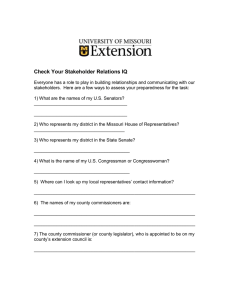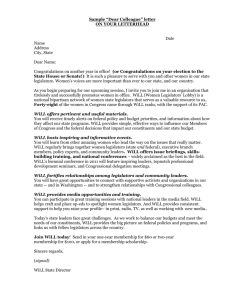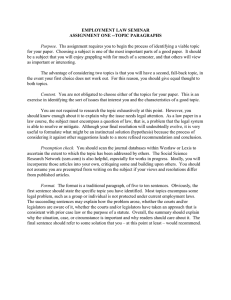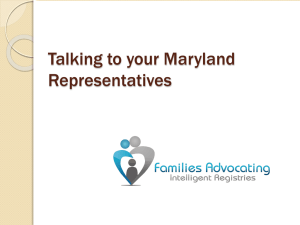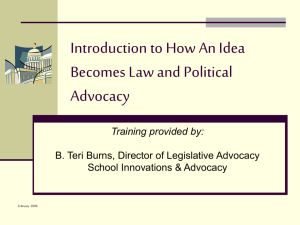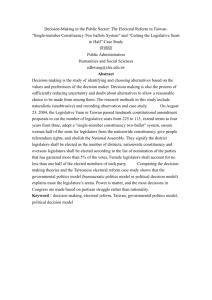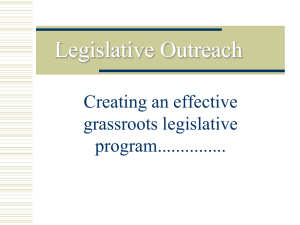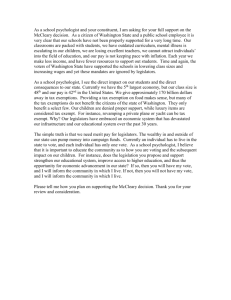Patient Rights
advertisement
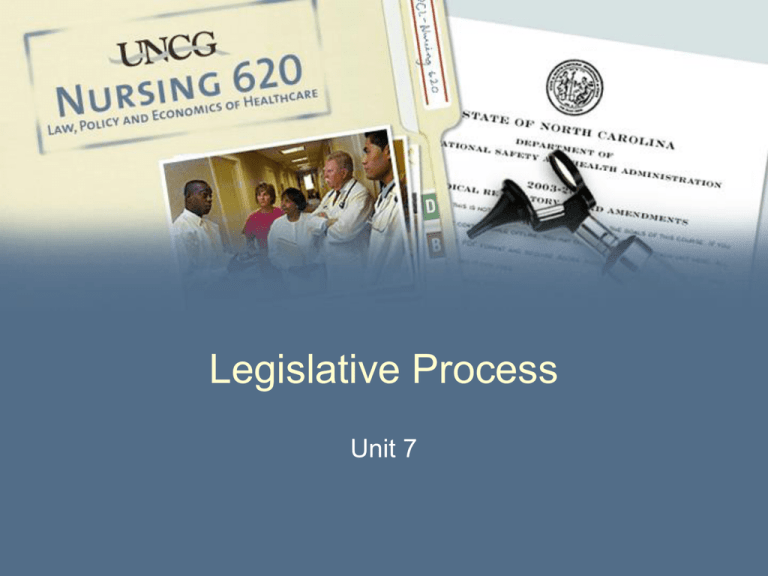
Legislative Process Unit 7 How a Law is Made Drafting of bills Introduction of bills Reference to committee Consideration by first House Consideration by second House Concurrence in amendments Enrollment, ratification, and publication 2 The Federal Courts Litigation Enforcement of Existing Legislation Antitrust Laws Liability (Torts, Product Liability) Class Action Suits 3 Where to Get Involved Family and friends Workplace Local agencies and organizations Coalitions and committees State agencies State General Assembly Congress 4 How to Get Involved Write letters Studies have shown that as few as 5 letters to a delegate influence their vote Place phone calls Legislators pay attention to constituent lines Stay in contact with legislators Join committees and coalitions Get on email lists. 5 Meet with a Legislator The best time is in their home district. Send a brief letter ahead of the meeting List issues you want to discuss Be concise Don’t leave without a follow-up plan Make you and your expertise available Make your name interchangeable with the issue 6 Issue Identification Choose your issue to pursue Know related issues Know opposition as well as your position Stay involved Stay focused Respond quickly Be prepared 7 Build and infrastructure Identify key contacts Become “the expert” Educate everyone, especially legislators Communicate daily Promote involvement 8 Grassroots Local meetings Get people in contact with legislators Remember 5 letters can bring your issue to the top of the pile Post cards and emails Call undecided legislators in key areas Always stay positive and “be friendly” 9 This is Your Government Start small and work your way into the system Go to nursing general assembly day Join the Legislative Coalition of NC Nurses Attend conferences Research legislation you are interested in Run for local office Get on state committees 10
